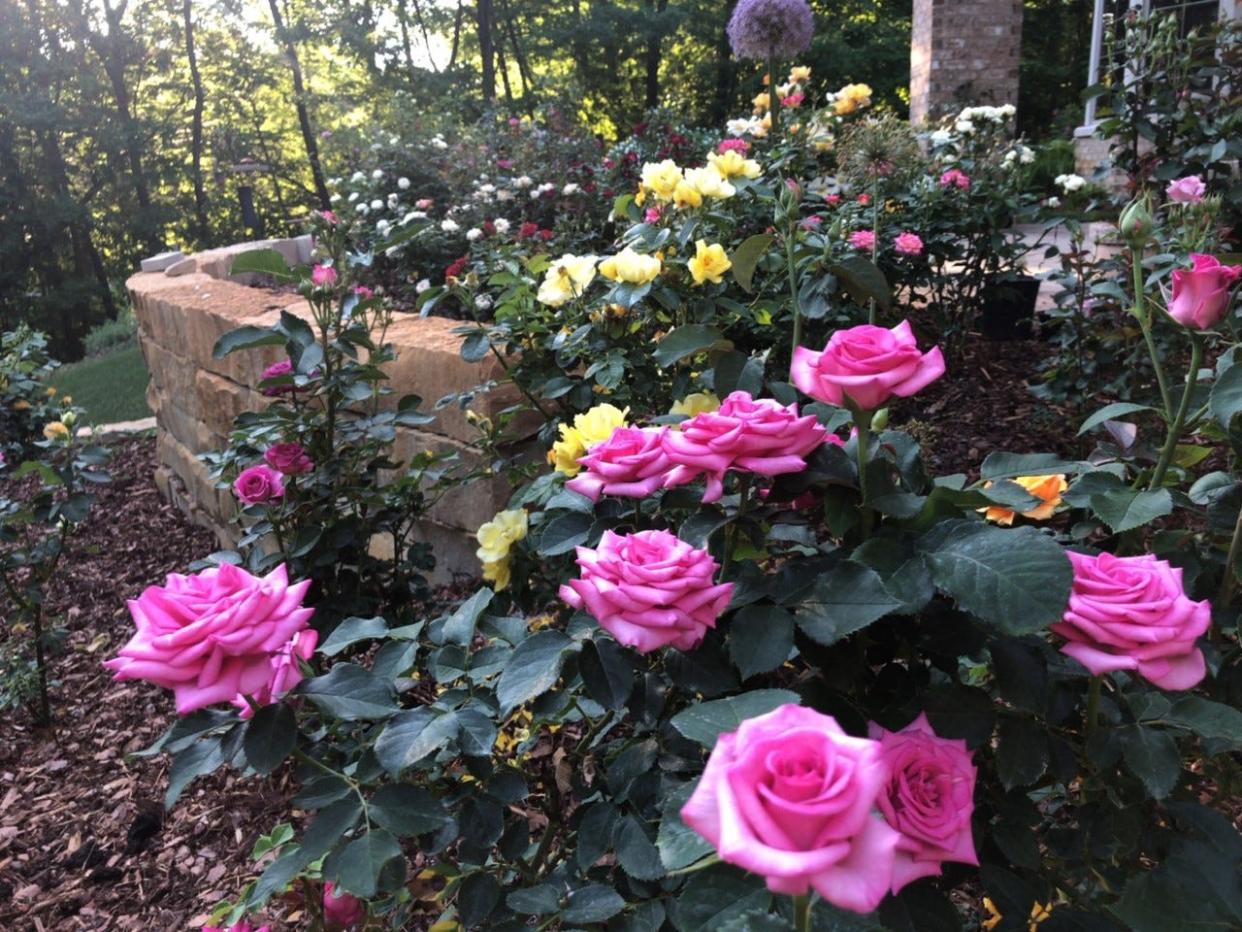Here's how to grow beautiful roses in your landscape

Roses are one of the most popular flowers for landscapes and are a favorite for giving in cut bouquets, but have a reputation for being difficult to grow. Many see rose bushes as being finicky, prone to fungal disease and in need of extensive pruning and maintenance. While that may be true for some rose cultivars, there are many, many options to choose from and some roses are very easy to care for!
Two broad categories of easy-to-grow roses are antique and Earth-Kind types. Earth-Kind roses are cultivars that have been through rigorous scientific testing to find those that are tough – needling little water or pruning, and no pesticides or fertilizer. Antique or old roses have been around a long time because they are very hardy and a bonus is that they are very fragrant.
February is a great time to focus on roses not only because of Valentine’s Day, but mid-February is a good time of year to plant new plants and to prune existing ones if needed. No matter what kind of rose you choose, plant in full sun and with good air circulation. This will go a long way to reducing fungal diseases on the leaves and will encourage good blooming. Don’t plant too close to other plants or structures. Incorporate compost into the soil before planting and use good planting technique – dig a hole that is wide but not too deep (only plant the rose as deep as it had been growing in the nursery). Apply a three to four-inch-deep layer of wood mulch around the plant but pull it away from the stem.
Don’t fertilize at planting – Earth-Kind roses won’t need fertilizer anyway, and it’s a general rule of thumb to wait until plants have had time to establish before applying any fertilizer. Water the plant in well, and water as needed when there is no rain. Newly planted plants will always need to be watered more frequently than established plants, so keep a close eye on it and water every few days for the first few weeks. Then, how often to water depends on a lot of factors such as soil type and weather, but train the rose to grow deep roots and be more drought tolerant by watering thoroughly but not too frequently – wait until the soil is dry before watering.
The Master Gardener Training Course is coming up soon, the deadline to register is Jan. 25 with the first class on Feb. 1. For details and to register, visit https://txmg.org/conchovalley/.
This article originally appeared on San Angelo Standard-Times: Here's how to grow beautiful roses in your landscape

